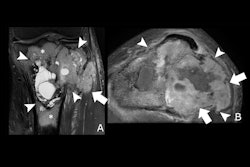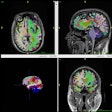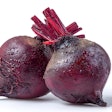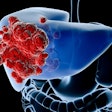An automated multiorgan tool can accurately segment T1-weighted abdominal MR images, according to research published April 22 in Radiology.
A team led by Yan Zhuang, PhD, from the Icahn School of Medicine at Mount Sinai in New York described the success of their MRISegmenter tool, which provided accurate and robust segmentation of 62 organs and structures on T1-weighted abdominal MRI in the team’s study.
“MRISegmenter is an efficient and accurate segmentation tool that can benefit various downstream clinical tasks,” the Zhuang team wrote.
Previous studies have explored MRI segmentation across different body parts, but they focus on a limited set of organs and structures, the researchers noted. They also highlighted that, to their knowledge, no abdominal MRI datasets with comprehensive annotations for the more than 60 abdominal organs and structures do not exist.
Zhuang and colleagues developed and evaluated the accuracy and robustness of an automated multiorgan and structure segmentation tool for T1-weighted abdominal MRI exams.
“There is a pressing demand to provide such a dataset, which will also allow the creation of an accurate and robust automated segmentation tool for abdominal MRI,” they wrote.
MRISegmenter is a 3D segmentation (nnU-Net) model. The researchers trained it on MRI series containing voxel-level annotations of 62 abdominal organs and structures. From there, they randomly split this internal dataset into training and internal test sets.
The study included data from 195 patients, including 135 in the training set and 60 in the internal test set. This also included 780 MRI scans containing 62 annotations each.
On the internal test set, MRISegmenter achieved an average Dice score of 0.861 and an average normalized surface distance (NSD) of 0.924.
The team also tested MRISegmenter on external tests, which included data used for other MRI segmentation tools. These included Abdominal Multi-Organ Segmentation Challenge 2022 (AMOS22, 60 MRI scans) and Duke Liver (95 patients, 172 MRI scans). MRISegmenter achieved an average Dice score of 0.829 and an average NSD of 0.908 on the AMOS22 set. On the Duke Liver dataset, MRISegmenter achieved an average Dice score of 0.933 and an average NSD of 0.929.
 MRISegmenter, a multiorgan and structure segmentation tool, segmented 15 major organs, seven vessels, eight muscles, and 32 skeletal structures using abdominal T1-weighted MRI studies. Visual examples show the segmentations for these organs and structures (images were produced by 3D Slicer, a free open-source software application).RSNA
MRISegmenter, a multiorgan and structure segmentation tool, segmented 15 major organs, seven vessels, eight muscles, and 32 skeletal structures using abdominal T1-weighted MRI studies. Visual examples show the segmentations for these organs and structures (images were produced by 3D Slicer, a free open-source software application).RSNA
The study authors highlighted that this model and dataset could impact a wide range of clinical applications that require segmentation in their preprocessing pipeline.
“It will not only address the shortage of publicly available MRI datasets with dense annotations but also allow more researchers to leverage the proposed tool and explore various clinical and translational applications, thus advancing abdominal radiology using MRI,” they added.
In an accompanying editorial, Paul Murphy, MD, PhD, from the University of California, San Diego, noted that despite MRISegmenter having its advantages over other segmentation tools, it “may be inadvisable” to overinterpret the reported differences in performance between these models.
He wrote that each model has a similar approach to labeling and training, each model relies on manual refinement of the outputs of retrained preliminary models, and all models use the nnU-Net framework to train new models.
“Therefore, their differential performance may arise not from any methodologic difference, but instead from the inclusion criteria of their training datasets,” Murphy wrote.
The full study can be accessed here.



.fFmgij6Hin.png?auto=compress%2Cformat&fit=crop&h=100&q=70&w=100)




.fFmgij6Hin.png?auto=compress%2Cformat&fit=crop&h=167&q=70&w=250)











